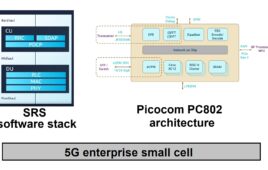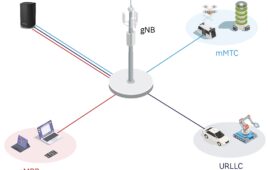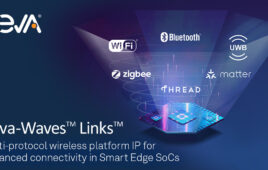AT&T said it is taking another step toward 5G this year with the launch of its Network 3.0 Indigo technology to deliver peak speeds of up to 400 Mbps in two “5G Evolution Markets.”
According to AT&T, Austin and Indianapolis will be the first 5G Evolution Markets, with launches in those cities scheduled in the coming months. Indigo is expected to deliver peak theoretical speeds of up to 400 Mbps on compatible devices, though AT&T didn’t specify which devices those might be.
Additionally, AT&T said further network densification and planned deployments of technologies like carrier aggregation and Licensed Assisted Access (LAA) are expected to enable theoretical peak speeds of up to 1 Gbps in some areas before 2017 is out.
AT&T first unveiled Network 3.0 Indigo at its Developer Summit during CES earlier this year, describing it as a platform that incorporates big data sharing, machine learning, artificial intelligence, and cloud computing.
“We see Indigo as the third generation of modern networking,” John Donovan, AT&T chief strategy officer and group president for Technology and Operations, said. “Indigo is our term for a world where it isn’t just your connection speeds that are accelerating, but every element of the network becomes more seamless, efficient, and capable. It is a living, evolving, upgradeable platform. Think of Indigo like the operating system on your phone. We’re taking that model to the network.”
AT&T said Indigo will run on its virtualized network (the carrier said 34 percent of its network is virtualized and it’s on track to hit 75 percent virtualization by 2020) and utilize the open source community around its ECOMP platform.
The carrier said part of the impetus to develop Indigo was the push toward 5G – an area where AT&T has certainly been busy and has more plans in the book.
Though it’s already announced an enterprise 5G trial with Intel, AT&T also revealed Wednesday it is constructing two new 5G testbeds at AT&T Labs in Austin that will go live this spring. According to the carrier, the testbeds will include dedicated 5G outdoor and indoor test locations, as well as flexible infrastructure to allow modifications and updates as 5G standards develop.
AT&T said it is working with multiple vendors to evaluate concepts for both fixed and wireless 5G solutions and explore next generation signal coverage in the 28 GHz, 39 GHz, and sub-6 GHz bands.
The news follows AT&T’s low key announcement earlier this week that it is acquiring FiberTower Corporation and its millimeter wave spectrum in the 24 GHz and 39 GHz. Austin is on the list of cities covered by FiberTower’s airwaves, though from the looks of it the FiberTower spectrum there is in the 24 GHz band.



